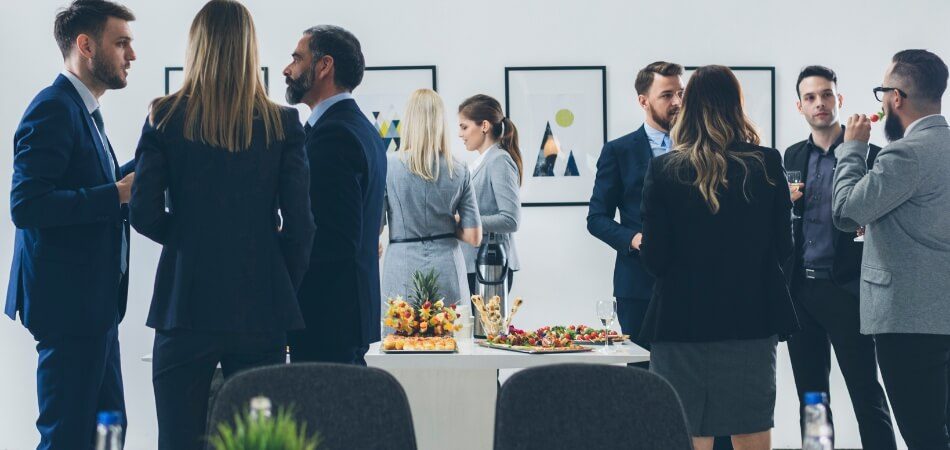In the world of business, conferences serve as dynamic stages where innovation and opportunity intersect. But the question that often arises is, “How do you market a product at a conference?” The answer lies in a strategic approach that blends creativity with engagement.
To introduce or market a product at a conference, you need to set up an engaging booth, offer interactive demos, network with attendees, collect contact information for follow-up, and leverage conference-specific promotions or discounts. These steps will help your product shine at the event.
We’ll explore every facet of marketing a product at a conference, equipping you with the knowledge and tools you need to make your next conference appearance a resounding success. So, if you’re ready to unlock the secrets of effective conference marketing, let’s dive right in.
What is Product Marketing?
Product marketing is a strategic function within a company responsible for promoting and positioning a product in the market. It involves crafting compelling messaging and strategies to communicate the product’s value to customers, ensuring alignment with their needs and expectations. Successful product marketing bridges the gap between development and sales by highlighting the product’s benefits clearly and persuasively.
A key aspect of product marketing is understanding customer behavior, market trends, and competition to refine strategies effectively. Marketers must focus on positioning their products correctly, developing features to address user demands, and selecting the most suitable conferences to showcase industry insights. These events provide opportunities to connect with potential clients, analyze competitors, and improve brand visibility through expert discussions.
Product marketers collaborate with sales teams, product managers, and stakeholders to ensure a seamless launch and sustained market growth. They develop content, conduct research, and refine messaging to enhance customer engagement. The ultimate goal is to maximize product adoption, drive revenue, and establish a competitive edge.
Importance of Market a Product at a Conference
Conferences like business conferences are powerful platforms for product marketing. They bring together industry leaders and potential clients, offering an excellent opportunity to showcase your offerings. Here’s why you should promote your product at conferences for enhanced visibility, credibility, partnerships, and staying on top of industry trends.
Enhancing Visibility and Exposure
Conferences provide a unique platform to showcase your product to a diverse audience of industry professionals and potential clients. The exposure gained at conferences can significantly boost brand recognition.
Building Credibility and Trust
Participating in conferences allows you to position your product alongside industry leaders and experts, enhancing its credibility. Interactions and partnerships forged at conferences can foster trust among customers and partners.
Engaging Face-to-Face Interactions
Face-to-face interactions at conferences facilitate meaningful connections and conversations. It’s an opportunity to address queries, demonstrate your product’s value, and gather valuable feedback directly from your target audience.
Staying Informed About Industry Trends
Conferences are hubs of innovation and information sharing. Attending them keeps you updated on the latest industry trends, technologies, and competitor strategies, helping you adapt and evolve your product accordingly.
Generating Leads and Nurturing Relationships
Conferences are fertile grounds for lead generation. By collecting contact information and following up post-conference, you can nurture relationships and convert leads into loyal customers.
How Do You Market a Product at a Conference?
In the world of business, conferences stand as dynamic hubs of opportunity. But the question remains: how do you market a product at a conference? The answer lies in a carefully orchestrated series of steps, designed to maximize your product’s impact in a bustling conference environment.
Step 1: Define Your Goals and Objectives
Begin your conference marketing journey by clearly defining what you aim to achieve. Are you looking to generate leads, increase brand awareness, launch a new product, or foster partnerships? Setting well-defined goals will guide your entire strategy, ensuring that every effort contributes to your overarching objectives.
Step 2: Choose the Right Conferences
Your success depends on selecting the right conferences that align with your business objectives and market presence. Research and evaluate potential events based on their relevance to your target audience and product niche. When planning, explore upcoming conferences in Canada or in any other countries like USA, Australia, Dubai, etc. to identify opportunities that match your industry and networking goals. Consider attendee demographics, exhibitor profiles, and the event’s reputation to ensure strong alignment with your strategy.
Step 3: Create an Engaging Booth Experience
Your booth is your canvas, and it should captivate attendees. Invest in an eye-catching and interactive booth setup that tells a compelling story about your product. Utilize visuals, demonstrations, and engaging displays to draw attendees in, making them eager to learn more about what you offer.
Step 4: Develop Compelling Content
Craft informative and engaging content materials that convey your product’s value effectively. These materials, which may include brochures, videos, and presentations, should articulate how your product addresses specific pain points or fulfills critical needs in your target market.
Step 5: Train Your Team for Success
Prepare your team to be the face of your product at the conference. Ensure that they are knowledgeable, approachable, and well-versed in your product’s features and benefits. Equally important is their understanding of the conference’s overarching goals and objectives.
Step 6: Network Effectively
Effective networking is a cornerstone of conference success. Encourage your team to engage in meaningful conversations with conference attendees. Ask questions to understand their needs and challenges, listen actively, and be ready to provide tailored solutions that align with your product’s value proposition.
Step 7: Utilize Social Media for Promotion
Leverage the power of social media as an extension of your conference marketing strategy. Create a buzz before the event, share real-time updates and highlights during the conference, and maintain post-event engagement. This approach broadens your reach and keeps your audience informed and engaged.
Step 8: Follow Up and Nurture Leads
After the conference concludes, it’s essential to follow up promptly with leads and connections made. Implement a personalized communication strategy to nurture these relationships further. Provide additional information, address inquiries, and offer tailored solutions or incentives as needed.
Step 9: Evaluate, Learn, and Iterate
Post-conference, conduct a thorough analysis of your marketing efforts. Evaluate what worked well and identify areas for improvement. Use these insights to refine your conference marketing strategy for future events, ensuring a continuous cycle of improvement and success.
By following these comprehensive steps, you’ll be well-equipped to successfully market your product at conferences. These efforts will harness the full potential of conferences, enabling you to enhance visibility, engage with your target audience effectively, and drive tangible business growth.
Navigating Unexpected Challenges When Marketing a Product at a Conference
When marketing a product at a conference, unexpected challenges can arise, requiring adaptability and strategic thinking. Here’s how to tackle them:
- Preparation: Anticipate potential hiccups and have backup plans ready to mitigate disruptions during the event.
- Team Communication: Maintain constant communication among your team members to swiftly address emerging issues.
- Resource Allocation: Allocate resources judiciously to address unforeseen needs without overspending.
- Adaptive Messaging: Be ready to adjust your marketing message in real-time based on audience feedback and evolving circumstances.
- Technology Reliability: Ensure all tech tools and equipment are thoroughly tested and reliable to prevent technical glitches.
- Contingency Staffing: Have backup staff on standby to fill in if team members are unavailable due to unforeseen circumstances.
- Audience Engagement: Keep attendees engaged with interactive activities to mitigate distractions and maintain their interest.
- Feedback Loop: Collect feedback during the conference to make immediate improvements and address concerns effectively.
- Networking: Build relationships with other exhibitors and event organizers for mutual support in case of challenges.
- Stay Calm: Maintain a composed demeanor and problem-solving attitude to inspire confidence in your team and clients.
Conclusion
To excel in marketing a product at a conference, as part of the strategic approach to “how do you market a product at a conference?” involves careful planning, engaging content, and effective networking. Conferences provide opportunities to shine, build credibility, and connect with potential clients.
To succeed, set clear goals, choose the right conferences, create an appealing booth, and prepare your team. Use social media for promotion and follow up with leads after the event.
Adaptability is key to addressing unexpected challenges when marketing a product at a conference, ensuring a successful conference experience. In a nutshell, marketing a product at a conference is about making the most of these opportunities to showcase your product and achieve your goals effectively.







